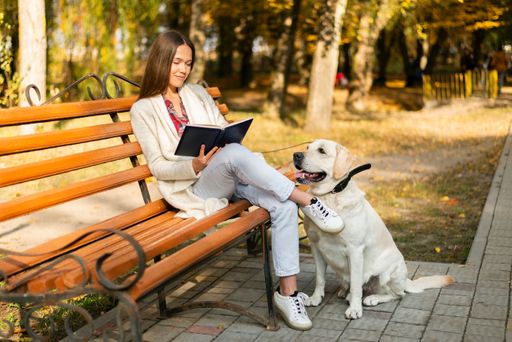The process of making your pet feel comfortable in various circumstances and with different people is known as dog socialization. The essence of socialization is to help your dog positively adapt to multiple sights, smells and sounds. When your pet is successfully socialized, scenarios such as hearing the sound of a hair dryer coming on, being in a car, in the park and generally any new environment are experienced without fear.
5 Tips on Socializing Your Dog
There are a few tips you can effectively apply when it comes to getting your dog socialized.
Start as early as possible
Though a dog can be successfully socialized at any age, it is best and easiest if you do this as early as you can. The best time to begin socializing is from 3 to 12 weeks as this period is when puppies are the most accepting of new encounters. It becomes much more difficult and takes a little extra work for a dog to be socialized beyond 18 weeks.
It is possible that the breeder whom you got your pet from may have begun the socialization process before your puppy goes home with you. However, once with you in a new environment, the socialization has to continue.
Expose your pet to as many scenarios and situations as you are able to
Every new experience is the perfect opportunity to create and teach your dog a positive connection. You can begin with objects and people at home before gradually proceeding to external spaces. Here are a few suggested examples to get you started:
- After spending a bit of time at home getting to have a feel of various people and items, one of the easiest and fastest ways to socialize your pet is to go for daily walks.
Doing this allows your dog feel comfortable with events occurring around him or her. Your pet also gets to see and deal with different people involved in a variety of activities – some jogging, some walking. You both may even encounter people walking with canes, crutches or wheelchairs.
Your dog would also see cars driving by and just generally begin to have knowledge of life around them.
- Have your dog meet people of various ages, genders and ethnic groups. Get your dog to interact with elderly people, young people and children. Also consider exposing your pet to people wearing various kinds of outfits including hats and different types of footwear. You could try introducing your pet to uniformed people as well.
Where possible, get these people to pet your dog but make sure their hands can be easily seen. This improves positive association while reducing any wariness your dog may feel.
- If you don’t own another pet, you could either ask a friend who does or even visit a nearby park. Playing or interacting with the other animal is not required at this stage. Instead, simply have your pet observe the other.
- Have your dog walk or sit on various surfaces such as carpets, sand, tiles, wooden floors, mud, metal, etc.
These are only a handful of suggested things to try. There are a ton of options always available around you.
Start slow and use your discretion
It is important to not rush the process. Be gentle, take your time and deal patiently with your dog. Also be cautious, observant and discerning when introducing something new to your puppy. If you notice any discomfort, don’t force or insist on continuing with the activity.
Don’t give rewards for fearful behavior
Ensure you have a sufficient amount of treats while introducing your pet to new things so they know what they are being exposed to is good. Give rewards only when there is a positive response.
Your pet’s discomfort and uneasiness may move you to try to pet them or give treats in a bid to reduce fear and to calm them down. However, when it comes to dog socializing, doing this would be extremely detrimental. You would be enforcing fear, making your pet think nervous behavior is okay.
Instead, as soon as you notice any discomfort, take your dog away from the situation and wait till they are calm. You could then try re-introducing the activity after a little while.
You could consider enrolling your puppy in socialization classes
Dog socialization classes would always be a great option as your pet is introduced to other dogs in a safe environment while also being trained to understand basic commands.
Dog Socialization – a Continuous Practice
Proper dog socialization encourages friendly behavior with humans and other animals, including fellow canines, while effectively preventing any behavioral problems from arising later in life. It is a highly recommended process for dogs which enables them live a full, confident and well-balanced life.
Dog socialization is a continuous practice that should occur throughout your pet’s life. It must carry on even after he or she is no longer a puppy as new situations and circumstances can arise at any point of their lives.



















